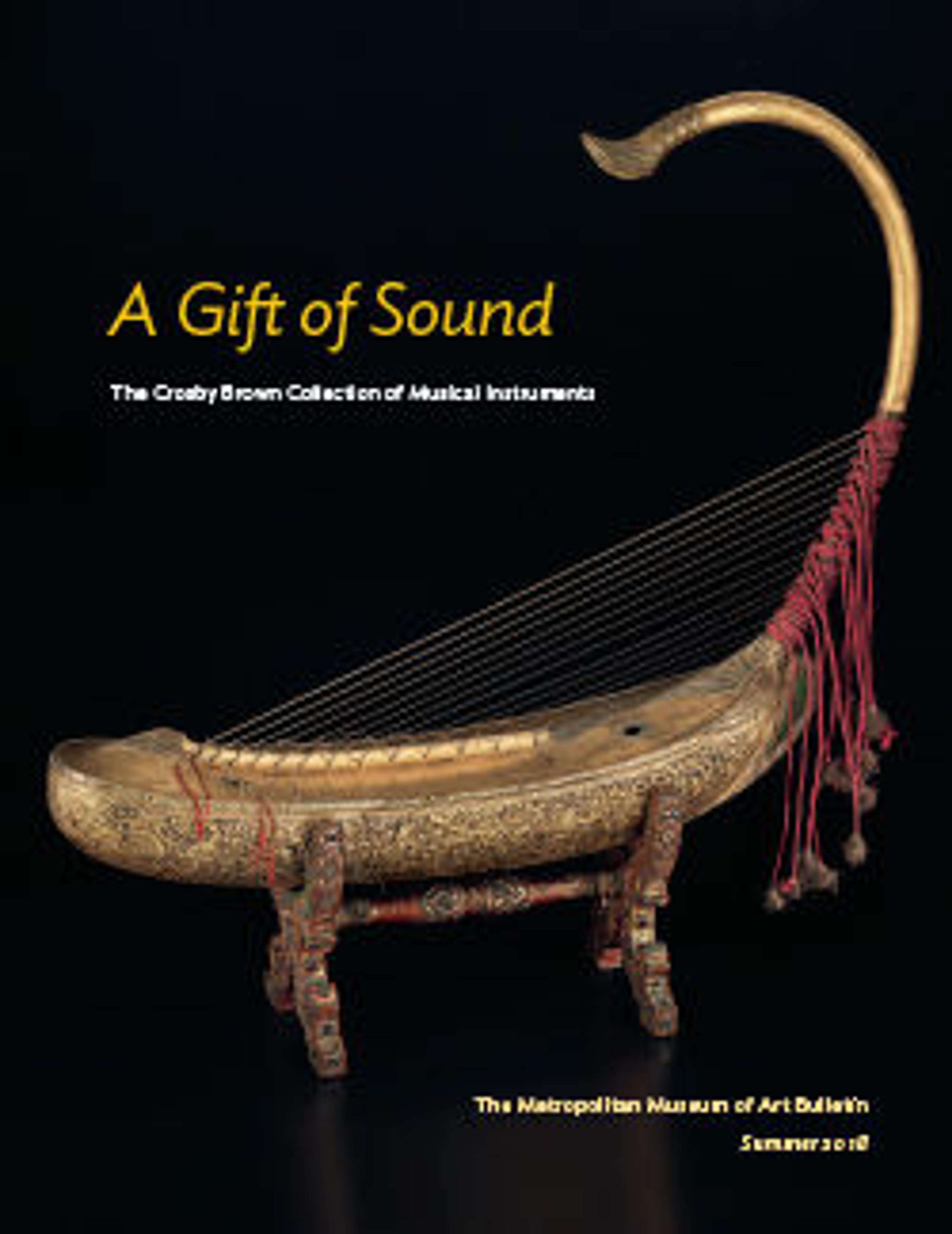Bass saxtuba in E-flat
Saxtubas were built as a family with instruments ranging from B-flat sopranino to B-flat contrabass. This bass in E-flat was the second largest size. The striking appearance of the larger sax tubas was inspired by the Roman cornu as depicted on Trajan's Column. Saxtubas were first used in 1852 in the premiere performance of Halevy's opera Le juif errant in the Paris Academie Nationale de Musique, where they featured in a 15-piece stage ensemble. They also appeared in a military and national ceremony in Paris on the Champ de Mars later in 1852. This instrument and a B-flat tenor held in the Trompetenmuseum in Bad Saeckingen, Germany are the only saxtubas known to survive.
Artwork Details
- Title: Bass saxtuba in E-flat
- Maker: Adolphe (Antoine Joseph) Sax (Belgian, Dinant, Belgium 1814–1894 Paris)
- Date: 1855
- Geography: Paris, France
- Culture: French
- Medium: brass
- Dimensions: 51 × 36 1/2 × 12 1/2 in. (129.5 × 92.7 × 31.8 cm)
- Classification: Aerophone-Lip Vibrated-horn
- Credit Line: The Crosby Brown Collection of Musical Instruments, 1889
- Object Number: 89.4.1109
- Curatorial Department: Musical Instruments
More Artwork
Research Resources
The Met provides unparalleled resources for research and welcomes an international community of students and scholars. The Met's Open Access API is where creators and researchers can connect to the The Met collection. Open Access data and public domain images are available for unrestricted commercial and noncommercial use without permission or fee.
To request images under copyright and other restrictions, please use this Image Request form.
Feedback
We continue to research and examine historical and cultural context for objects in The Met collection. If you have comments or questions about this object record, please complete and submit this form. The Museum looks forward to receiving your comments.
